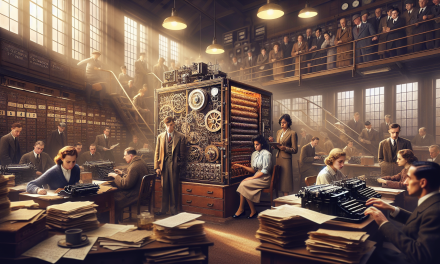Picture this: 250 miles above Earth, hurtling through space at 17,500 miles per hour, a massive laboratory the size of a football field quietly orbits our planet. Inside, astronauts from different continents work side by side, speaking multiple languages, sharing meals from their respective cultures, and collaborating on experiments that benefit all of humanity. This isn’t science fiction—it’s the International Space Station, and it might just be the most impressive example of global teamwork our species has ever achieved.
Building Something Bigger Than Any One Nation
Think about the last time you worked on a group project. Maybe you had to coordinate schedules, figure out who was good at what, and somehow merge everyone’s different ideas into something coherent. Now imagine doing that with fifteen different countries, each with their own space agencies, languages, technical standards, and ways of doing things. Oh, and the stakes? Only the most expensive structure humans have ever built, floating in the vacuum of space.
The ISS represents contributions from the United States, Russia, Japan, Canada, and eleven European nations. Each country didn’t just write a cheque—they designed and built entire sections. Russia handles propulsion and life support systems. The US provides power generation and the main living quarters. Japan contributes a laboratory module and cargo transport. Canada built the robotic arm system that’s become famous for its precise movements. Europe provides laboratory space and an automated cargo vehicle.
What’s remarkable is that these modules, built in different countries using different measurement systems and engineering approaches, had to fit together perfectly in space. It’s like fifteen different orchestras, each playing their own piece of music, but somehow creating a beautiful symphony.

When Language Barriers Meet Life-or-Death Situations
Imagine being 250 miles from Earth when an emergency alarm starts blaring, and your crewmate is shouting instructions in Russian while you’re frantically trying to remember your training in Japanese procedures. This is reality on the ISS, where astronauts must be fluent in at least English and Russian, with many also speaking Japanese, and basic phrases in other languages.
But here’s where it gets interesting from a problem-solving perspective: the crew doesn’t just learn languages, they develop what you might call “universal protocols.” Much like how programmers create standard interfaces that allow different software systems to communicate, ISS crews use standardized procedures, gesture systems, and even colour-coded equipment that transcend language barriers.
Consider how they handle emergency situations. Every critical procedure has multiple backup communication methods: visual signals, standardized hand gestures, and even simple drawings. It’s like creating a user interface for human cooperation—intuitive, redundant, and foolproof even under extreme stress.

The Art of Diplomatic Engineering
Perhaps the most fascinating aspect of the ISS isn’t the technology—it’s the diplomatic engineering that keeps everything running smoothly. Think about it: when was the last time fifteen countries agreed on where to go for lunch, let alone how to build and operate a space station?
The secret lies in what systems engineers call “modular design thinking.” Instead of trying to create one massive, unified approach, the ISS partnership divides responsibilities into clear, self-contained modules. Each country leads in their area of expertise, but the interfaces between modules are standardized and transparent. Russia doesn’t need to understand how the American power system works internally—they just need to know that it delivers a specific voltage at a specific connector.
This approach mirrors how great software teams work: clear APIs, defined responsibilities, and trust that each team will deliver their part according to specification. The magic happens at the interfaces, where different systems seamlessly connect despite being built by entirely different teams with different approaches.
Problem-Solving Across Cultures


When something breaks on the ISS (and things break regularly), the repair process involves teams spread across multiple continents, working in different time zones, often requiring parts that don’t exist yet. The problem-solving methodology that emerges is fascinating.
First, they use what you might call “distributed debugging.” Engineers in Houston, Moscow, Munich, Tokyo, and Montreal simultaneously analyse the same problem from their cultural and technical perspectives. A Russian engineer might approach a thermal regulation problem differently than a Japanese engineer, leading to creative solutions neither would have discovered alone.
Then comes collaborative rapid prototyping. When astronauts needed a wrench that didn’t exist on the station, NASA simply emailed the design file to the ISS, where it was 3D printed in space. This represents a new model of international cooperation: instead of shipping physical objects across borders, we’re sharing digital designs across the vacuum of space.
What the ISS Teaches Us About Teamwork
The most valuable lessons from the ISS aren’t about rocket science—they’re about human cooperation. The station demonstrates that successful collaboration doesn’t require everyone to think alike or work exactly the same way. Instead, it requires something more sophisticated: clear communication protocols, mutual respect for different approaches, and shared commitment to common goals.
Consider the daily routine on the ISS. Crew members follow schedules planned by mission control centers around the world, but they also have flexibility to solve unexpected problems using their combined cultural approaches to troubleshooting. An Italian astronaut might bring systematic methodology, while an American crewmate contributes practical improvisation, and a Russian colleague offers robust engineering principles.
The key insight is that diversity isn’t just nice to have—it’s operationally essential. When you’re facing problems no one has ever encountered before, having multiple perspectives and problem-solving approaches dramatically increases your chances of finding solutions.
The Ripple Effects of Space Cooperation
What happens when you take engineers, scientists, and astronauts from different countries and give them a shared mission? They don’t just solve space problems—they create new ways of thinking about earthly challenges.
Technologies developed for ISS life support systems now help provide clean water in remote areas. Communication protocols designed for space-to-ground coordination improve disaster response systems. The collaborative management techniques used to coordinate international crew rotations are being adapted by global companies managing remote teams.
But perhaps most importantly, the ISS proves that humans can work together on projects that transcend national interests. Every photograph taken from the ISS shows Earth without borders—a blue marble where human-created divisions become invisible, and what emerges is our shared home requiring our collective care.
Lessons for Future Collaboration

The ISS partnership has been continuously operating for over two decades, through political tensions, economic crises, and global pandemics. This longevity offers profound insights about sustainable cooperation. The secret isn’t perfect harmony—it’s robust systems that can handle disagreements, changing circumstances, and even periods when partner nations have strained relationships on Earth.
The station continues operating because the partnership was designed like good software: with clear interfaces, defined responsibilities, and graceful handling of unexpected situations. When political tensions arise between partner nations, the ISS framework provides neutral ground where technical cooperation can continue.
As we face global challenges that require unprecedented cooperation—climate change, pandemics, sustainable development—the ISS model offers a proven blueprint. It shows us that we can build complex, long-term international partnerships that deliver tangible benefits while respecting different approaches and capabilities.
Every day, the International Space Station completes sixteen orbits around our planet, bringing together minds from across the world to push the boundaries of human knowledge. It’s a reminder that our greatest achievements emerge not when we all think alike, but when we combine our different strengths toward shared goals that matter to everyone.








